Physical Address
304 North Cardinal St.
Dorchester Center, MA 02124
The thin and thick arrows point to what findings on the EEG? ( Fig. 1Q1 )
They both indicate frontal slowing, which is worse in B.
They both indicate eye movements, which are slower in B.
The thin arrow points to eye flutter and the thick arrow points to frontally predominant generalized rhythmic delta activity (GRDA).
The thin arrow points to frontally predominant GRDA and the thick arrow points to eye flutter.
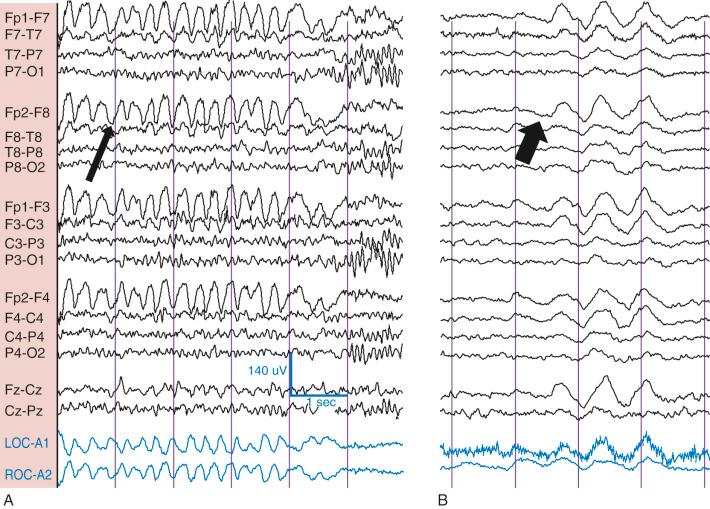
The figure depicts frontotemporal sharp waves (boxes) ( Fig. 1Q2 ). What is the best statement regarding these sharp waves?
A sharp wave on EEG is the summation of at least 150 action potentials.
For a sharp wave to be apparent on EEG, at least 1 cm 2 of cortex must be involved.
A sharp wave is generated by the summation of a large number of inhibitory post-synaptic potentials (IPSP).
A sharp wave is generated by the summation of a large number of excitatory post-synaptic potentials (EPSP).
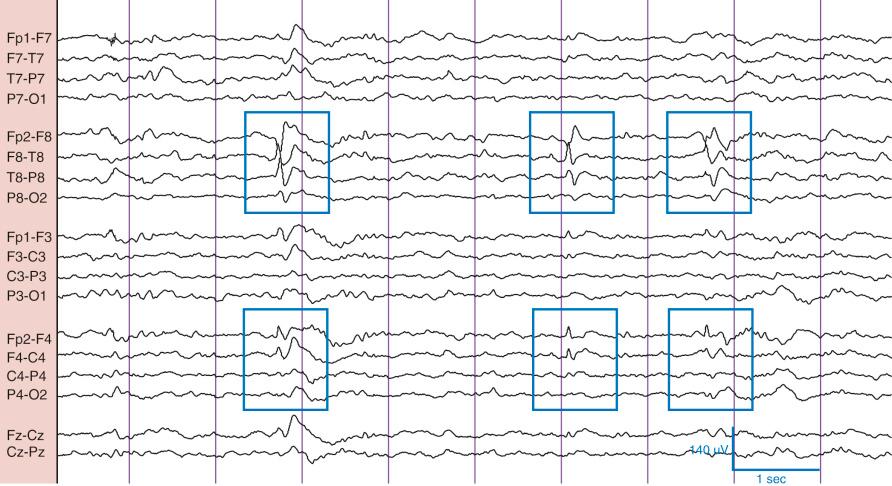
The above diagram of an EEG ( Fig. 1Q3 ) makes it clear that:
There is nothing of interest happening at the F8, T8, P8 electrodes as there is no potential difference.
In a bipolar recording, channels which are relatively flat may involve electrodes which are more electronegative than the surrounding electrodes.
There is a large electronegative field here and O2 and Fp2 are maximally electronegative.
The amplitude is highest at the O2 electrode. This indicates that O2 is more electronegative than the surrounding electrodes.
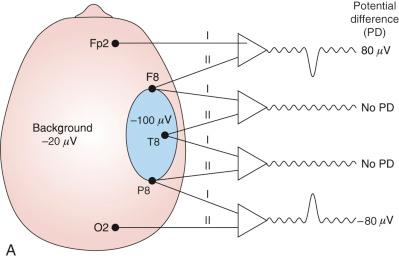
After a busy day as a neurophysiology fellow, your mentor reviews EEGs with you. You read this EEG as normal ( Fig. 1Q4 ). Your attending is shaking her head. What did you miss?
You missed nothing. This EEG is normal and your attending needs a vacation.
This EEG is not normal. It represents alpha coma.
The eye deflections are asymmetric and there is likely something wrong with the left eye.
The eye deflections are asymmetric and there is likely something wrong with the right eye.
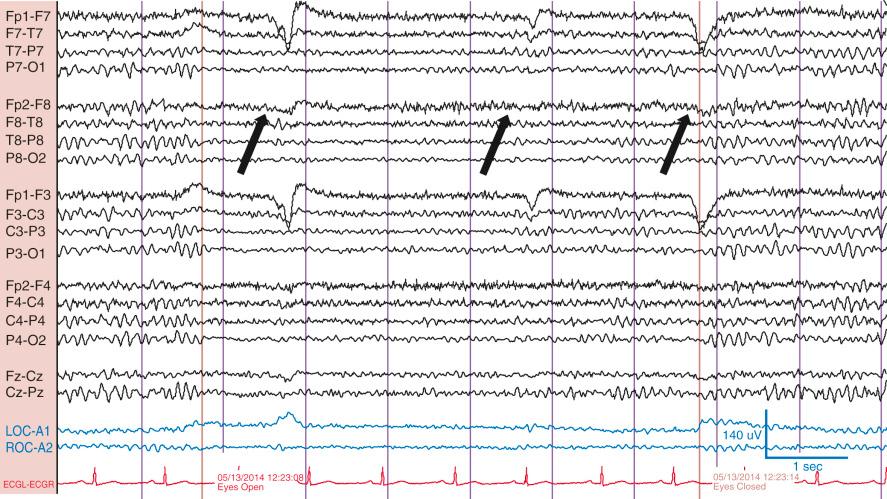
You report the findings found in this EEG ( Fig. 1Q5 ) as follows:
Ongoing right beating lateral nystagmus.
Bilateral independent frontal rhythmic delta activity (BI-LRDA).
Bilateral frontal focal status epilepticus.
Electrode pop at the F7 and F8 electrodes.
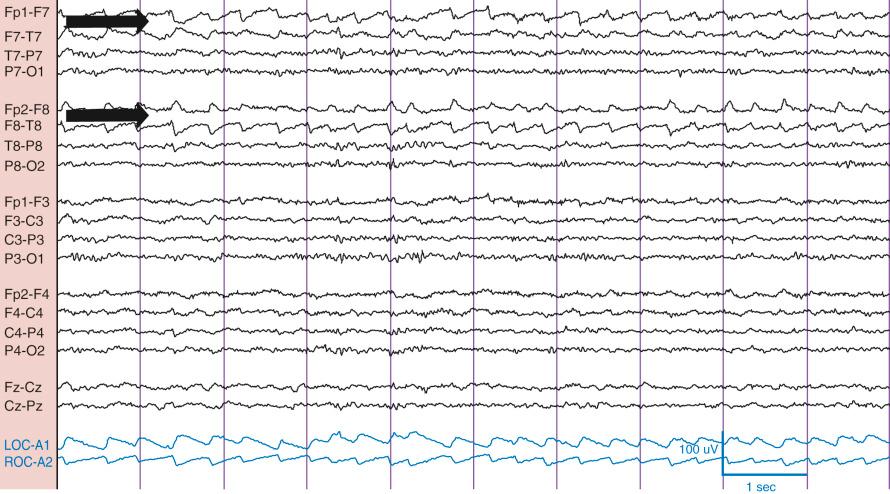
What phrase best describes a high frequency filter (HFF) or low pass filter:
A HFF attenuates the amplitude of frequencies above the cutoff frequency. In a HFF the input signal is placed across a resistor and capacitor in series and the output signal is measured across the capacitor alone.
A HFF slows the frequencies above the cutoff frequency. In a HFF the input signal is placed across a resistor and capacitor in series and the output signal is measured across the capacitor alone.
A HFF attenuates the amplitude of frequencies above the cutoff frequency. In a HFF the input signal is placed across a capacitor and a resistor in series and the output signal is measured across the resistor alone.
A HFF slows the frequencies above the cutoff frequency. In a HFF the input signal is placed across a capacitor and a resistor in series and the output signal is measured across the resistor alone.
While reading an EEG you change the display from 7 µV/mm to 15 µV/mm. You have:
Increased the sensitivity. The EEG will appear higher in amplitude.
Increased the sensitivity. The EEG will appear lower in amplitude.
Decreased the sensitivity. The EEG will appear higher in amplitude.
Decreased the sensitivity. The EEG will appear lower in amplitude.
What abnormal condition is most likely to arise out of this stage of sleep ( Fig. 2Q1 )?
Frontal lobe seizures.
REM behavior disorder. The eye leads indicate rapid eye movements.
Sleep walking.
Sleep paralysis.
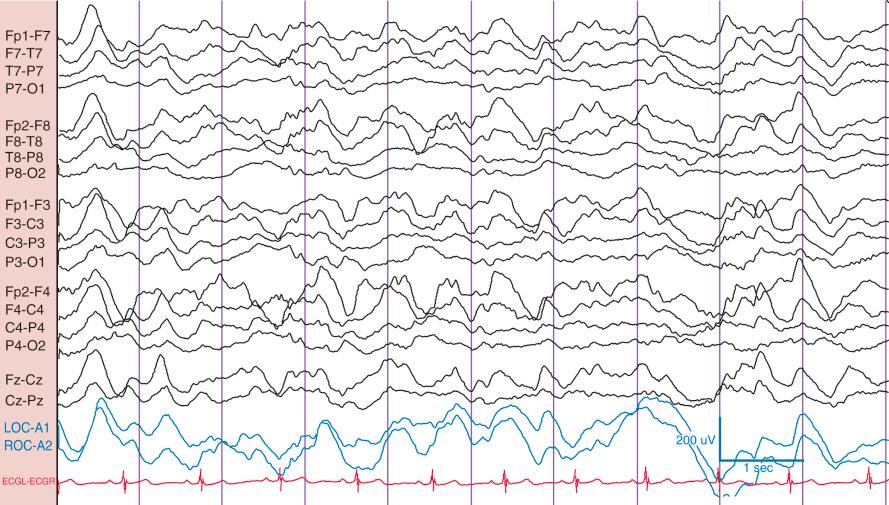
The sinusoidal rhythm seen in the box ( Fig. 2Q2 ) represents:
Mu rhythm and would attenuate with eye opening.
Wicket spikes and would attenuate by moving the arms.
Mu rhythm and would attenuate by thinking about moving the arms.
A brief potentially ictal rhythmic discharge (BIRD).
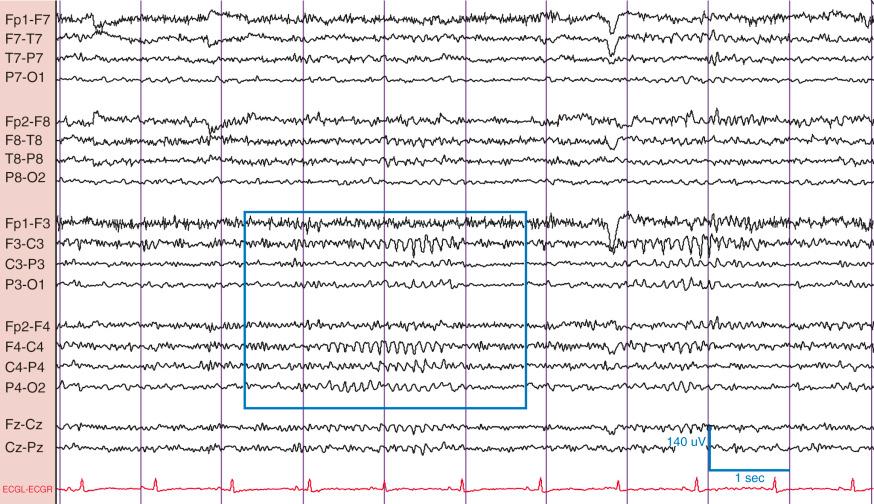
A 5-year-old child is referred to you for frequent episodes of inattention noticed by his teachers. His neurological exam is normal. You do an EEG and hyperventilate the child ( Fig. 2Q3 ). This EEG indicates
The child is engaging in the task and hyperventilating well.
The child has childhood absence epilepsy.
The child may have a toxic metabolic disturbance.
Diffuse slowing suggestive of diffuse cerebral dysfunction.
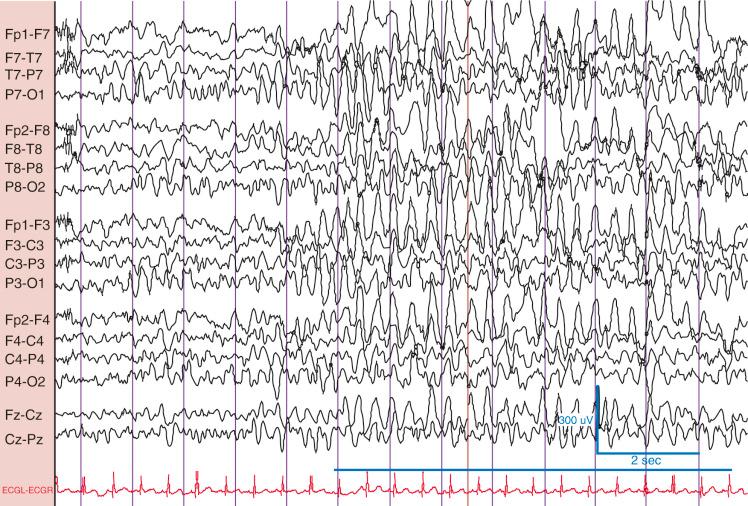
A 16-year-old girl comes to you after having a witnessed GTCC after a weekend of not sleeping. You do a routine EEG ( Fig. 2Q4 ). The technician stops the photic stimulation due to the finding pictured. You tell the technician,
This is a photoparoxysmal response to photic stimulation. Continuing the photic stimulation could lead to a convulsion.
This is photic driving and a perfectly normal response to photic stimulation.
This is a photomyogenic response to photic stimulation. Continuing the photic stimulation could lead to a convulsion.
This is a photomyogenic response to photic stimulation and a perfectly normal response to photic stimulation.
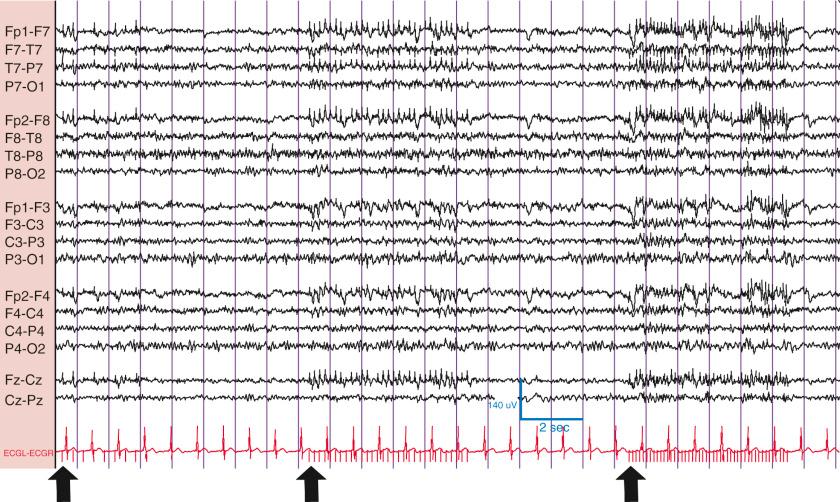
Become a Clinical Tree membership for Full access and enjoy Unlimited articles
If you are a member. Log in here